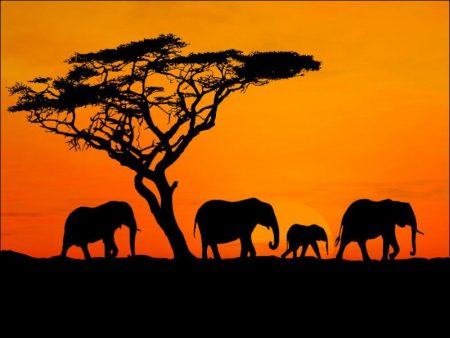Little over a hundred and fifty years ago a young scots surgeon named Mungo Park, more dead than alive from months of quenching travel, rode through Saharan sand and thorn into the remote city of Segu on the upper reaches of the river Niger.
“Looking forwards,” he would write, “I saw with infinite pleasure the great object of my mission — the long sought-for majestic Niger, glittering to the morning sun, as broad as the Thames at Westminster, and flowing slowly to the eastward.”
Ever since Ptolemy, sixteen centuries before, men had written on maps that the Niger flowed to the westward. Arabs of the Middle Ages, true enough, had known the middle course of the Niger for what it really was; but Europe, newly considering Africa in times of mercantile expansion, could be sure of nothing of its geography but the outline of the coast, and a little, here and there, of the obscure lands beyond.
“The course of the Niger, the places of its rise and termination, and even its existence as a separate stream are still undetermined,” declared the prospectus of the African Association, founded in London in 1790 for “Promoting the Discovery of the Interior Parts of Africa,” and it resolved that one of its explorers “should ascertain the course, and if possible, the rise and termination of that river.”
Mungo Park perished on the Niger before he could plot its course to the sea, but others followed. Within seventy years or so the main geographical facts were fixed and clear upon the continental map, and one misconception after another was corrected, one zone of ignorance after another filled with detail. African discovery took its place among the triumphs of the nineteenth century. The geographical myths and legends disappeared; in place of these, mapmakers could record the knowledge of sand and swamp, forest and savannah, snow-capped mountain range and bracing highland that the discoverers had won.
A similar process of discovery is now occurring, about a hundred years later, in the field of African history. Historians and archeologists — British, French, African, Italian, Belgian, American — have embarked on journeys of historical discovery that parallel the geographical ventures of Park and Clapperton, Caillié and Barth, Livingstone, Stanley, and so many more. What the nineteenth century achieved for the geography of Africa the twentieth is well towards achieving for its history; and once again the truth these pioneers are finding has proved, often enough, the reverse of what the outside world had generally believed.
Thus the chart of African history, so lately bare and empty and misleading as the maps once were, begins to glow with illuminating detail. Bearded monsters and “men whose heads do grow beneath their shoulders” begin to disappear; and humanity, in all its smallness and its greatness, begins to emerge. And it begins to be seen, if fleetingly and partially as yet, that the writing of African history is not only possible and useful, but will be as well a work of rediscovery — the rediscovery of African humanity.
Views: 165



